Librarians in the Digital Age: The Role of Library Science in the 21st Century
Exclusive Insights
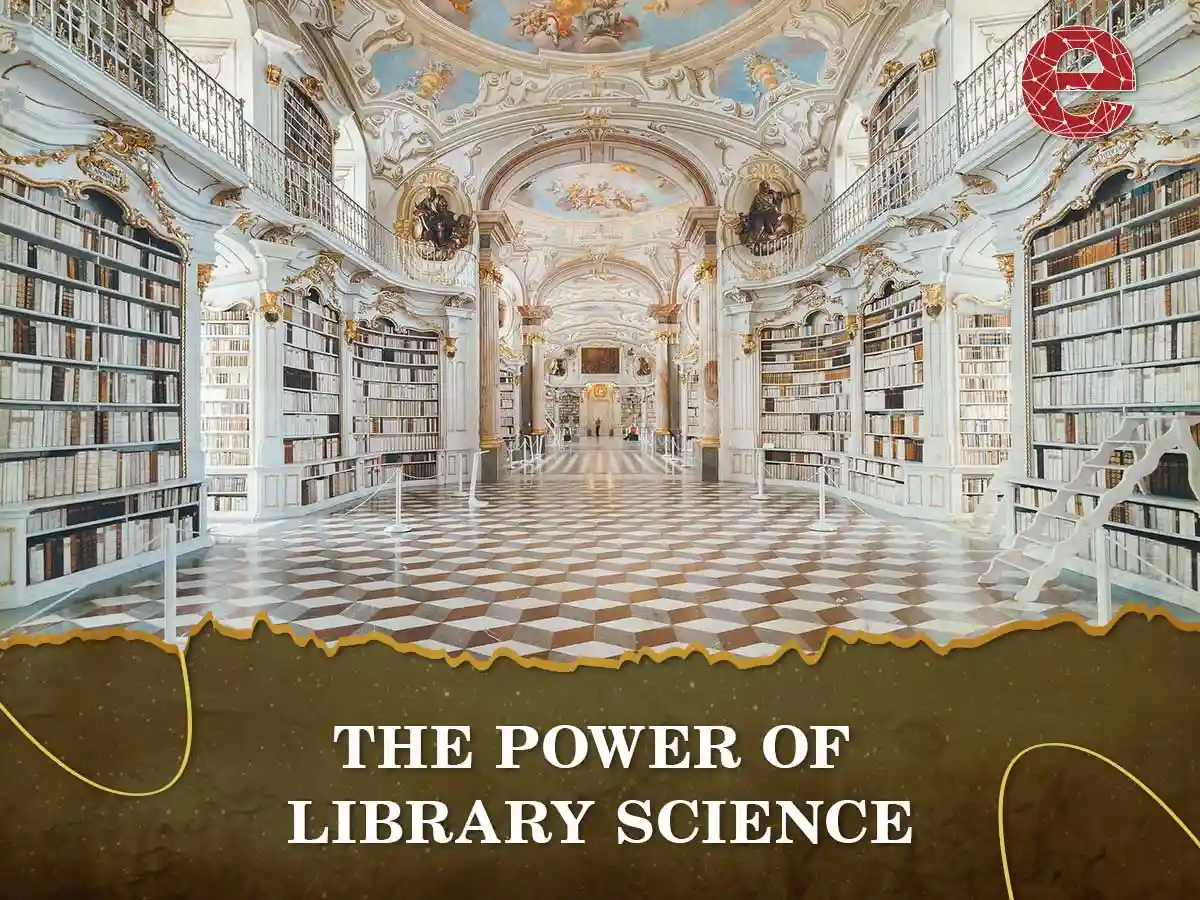
Imagine a world where knowledge knows no bounds, where books, data, and innovation converge to empower communities. Library Science isn't just about shelving books; it's a gateway to shaping the future of information and accessibility. From ancient scrolls to AI-driven archives, this dynamic field bridges the past and future. Dive into Library Science and discover the unsung heroes shaping how we learn, connect, and grow.
Library science (previously termed library studies and library economy) is an interdisciplinary or multidisciplinary field that applies the practices, perspectives, and tools of management, information technology, education, and other areas to libraries, the collection, organisation, preservation, and dissemination of information resources, and the political economy of information.
Martin Schrettinger, a Bavarian librarian, coined the discipline within his work (1808–1828). Rather than classifying information based on nature-oriented elements, as was previously done in his Bavarian library, Schrettinger organised books alphabetically. The first American school for library science was founded by Melvil Dewey at Columbia University in 1887.
History of Librarian and Library Science
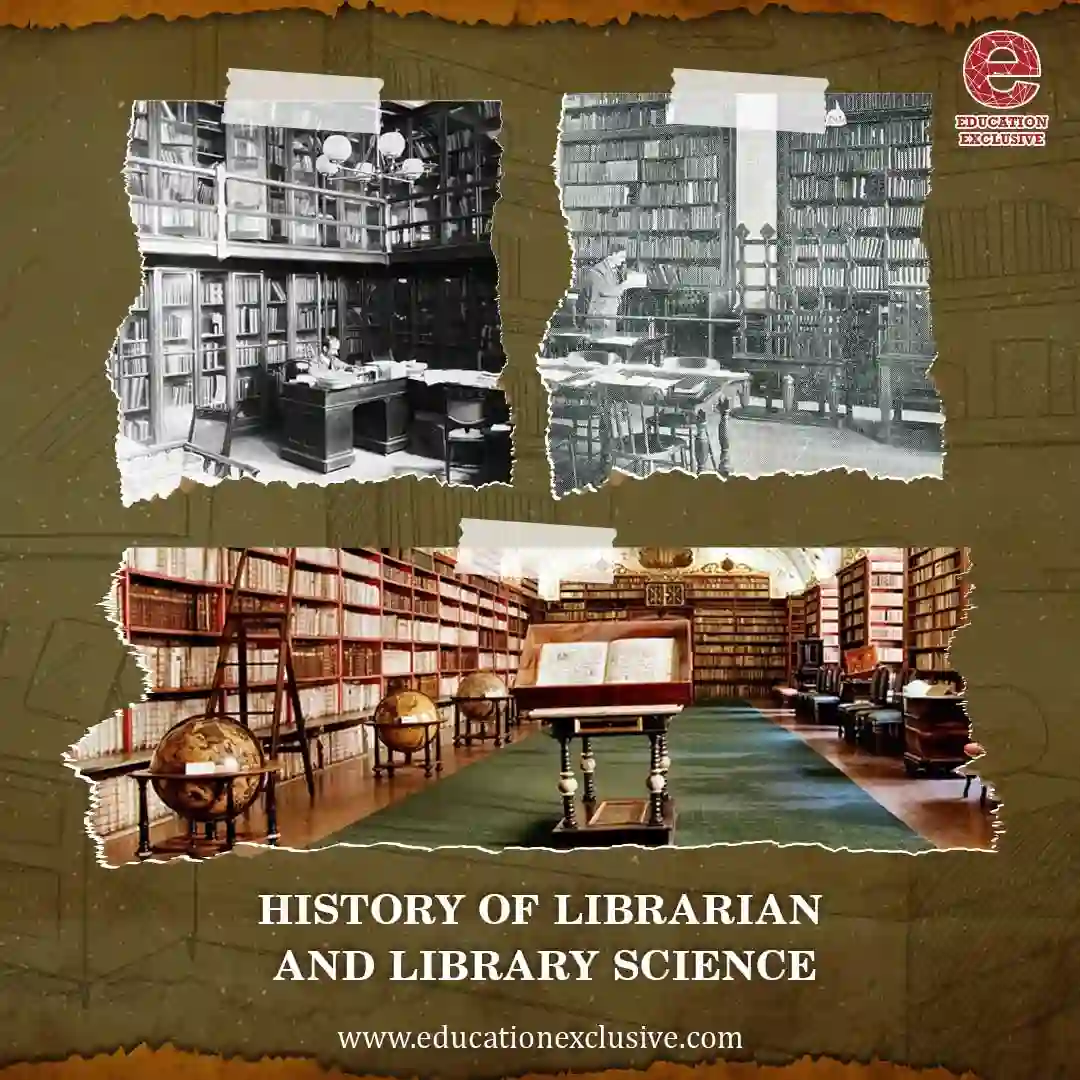
The history of libraries began with the first efforts to organise collections of documents. Topics of interest include accessibility of the collection, acquisition of materials, arrangement and finding tools, the book trade, the influence of the physical properties of the different writing materials, language distribution, role in education, rates of literacy, budgets, staffing, libraries for targeted audiences, architectural merit, patterns of usage, and the role of libraries in a nation's cultural heritage, and the role of government, church or private sponsorship. Computerisation and digitisation arose in the 1960s and changed many aspects of libraries.
Imagine stepping back 5,000 years to the bustling streets of ancient Mesopotamia, where scribes etched records of trade and myth onto clay tablets. These first libraries were more than storage spaces; they marked humanity's leap from prehistory to history, capturing knowledge and stories for future generations. Across the sands of Egypt, papyrus scrolls housed temple records and tales of gods, creating an enduring legacy of wisdom.
Fast forward to the grandeur of Nineveh, where the Library of Ashurbanipal safeguarded epic texts like the Epic of Gilgamesh, and to Alexandria, where scholars gathered at the world's most excellent knowledge repository, dreaming of cataloguing every piece of human thought. These were the cradles of learning, innovative and revolutionary for their time.
As centuries passed, libraries evolved. In ancient Greece and Rome, private collections became prized possessions of the elite. By the Roman Empire, public libraries took root, making knowledge accessible to more than just the privileged few. The 17th and 18th centuries ushered in the golden age of libraries, with institutions like the Bodleian Library and Chetham's Library breaking barriers and inviting the public to explore the world of books.
Private Libraries
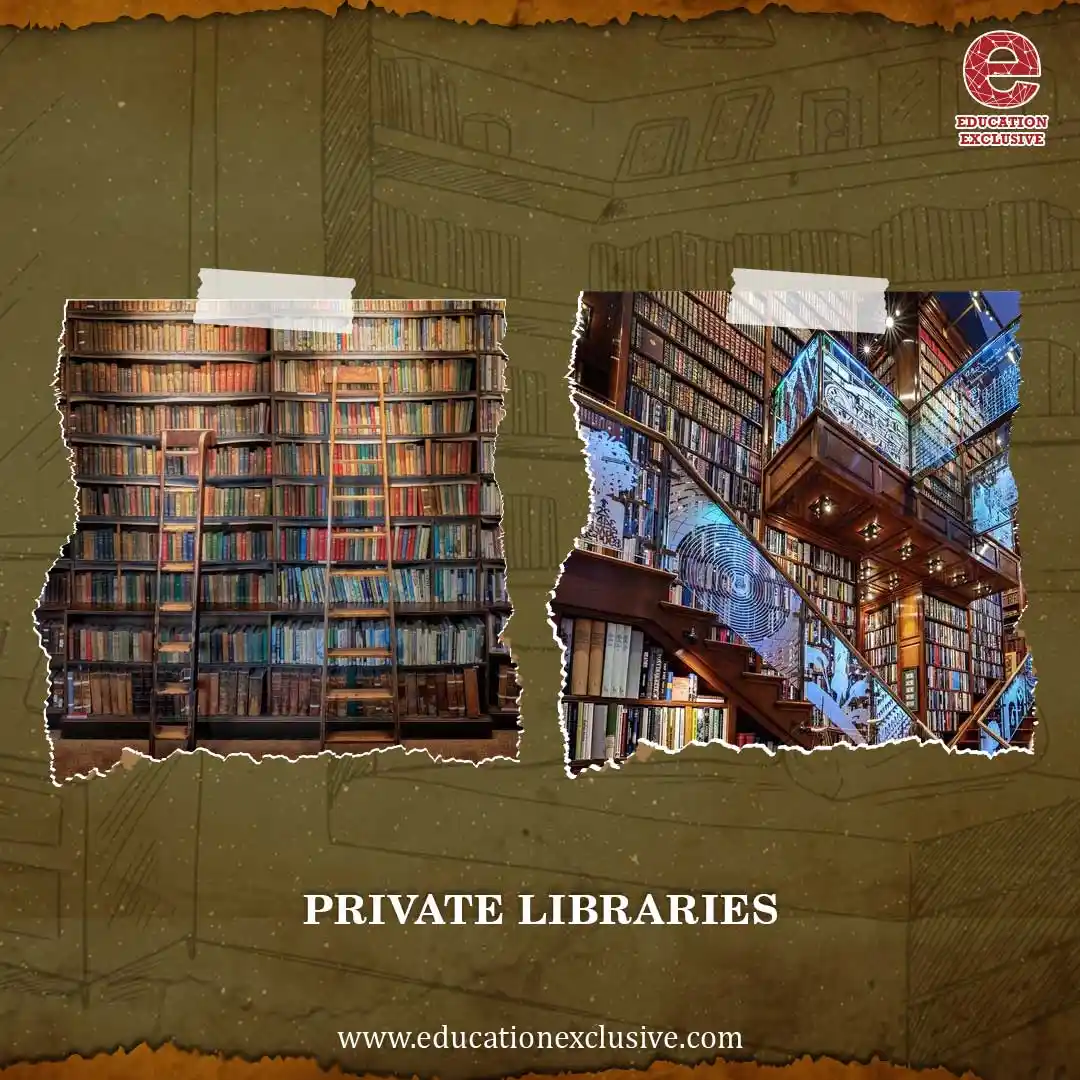
Private subscription libraries, often exclusive and prestigious, catered to select audiences, such as gentlemen-only memberships. These libraries required fees and maintained strict control over their collections, favouring history, antiquities, geography, and refined literature over cheap fiction. For example, Liverpool’s Subscription Library, later renamed the Athenaeum in 1798, combined a newsroom and coffeehouse, reflecting the tastes of its middle-class, mercantile patrons. With an entrance fee of one guinea and annual dues, it became a hub for respectable reading. Popular among landed gentry and professionals, these libraries symbolised intellectual refinement and social status in their communities.
Public libraries
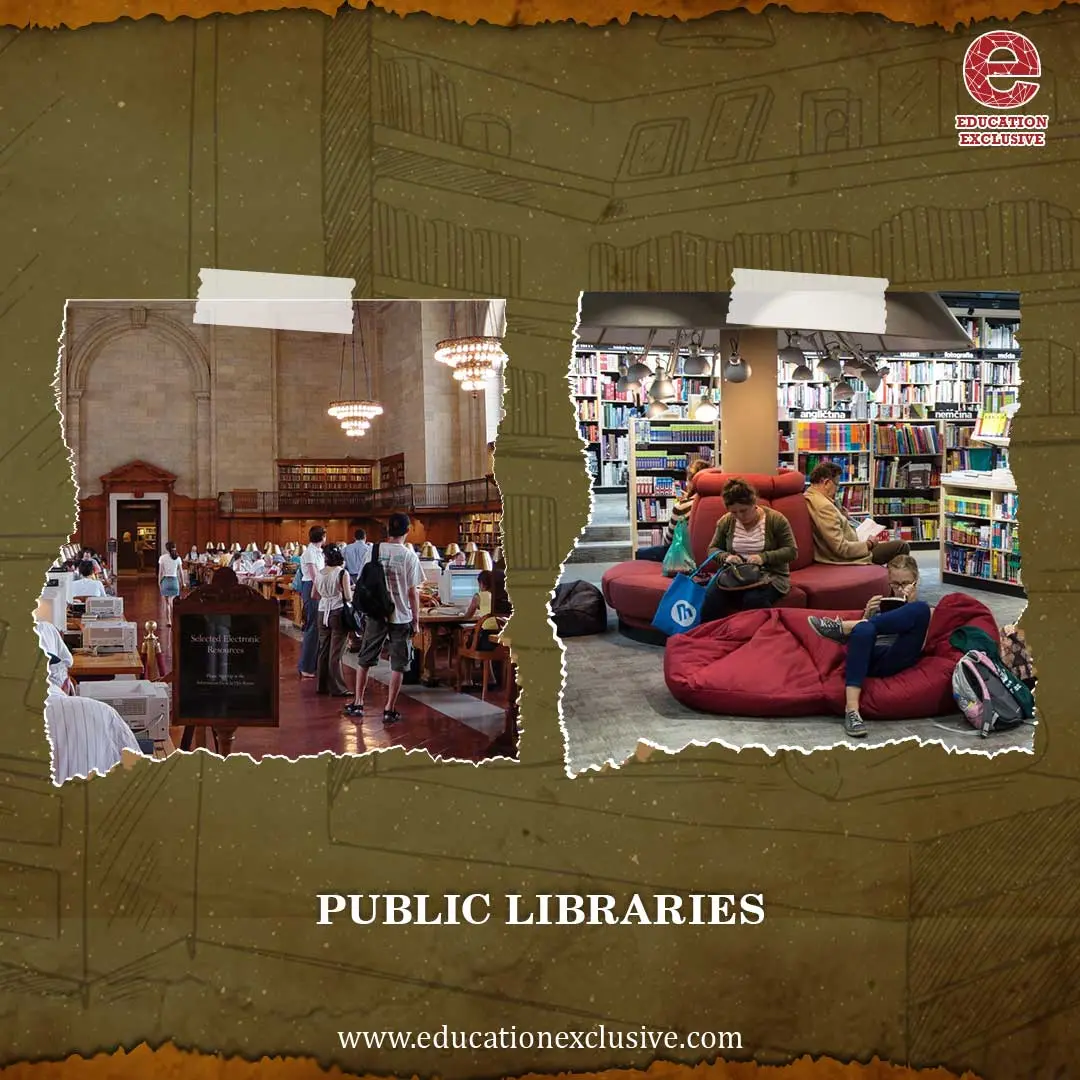
The history of libraries in India is deeply intertwined with the nation's cultural and educational heritage. Ancient Indian rulers and scholars established libraries as learning centres, as seen in the renowned Nalanda University, which housed an extensive collection of manuscripts. Other universities like Taxila and Vikramashila also boasted rich libraries, although access was limited to scholars.
The arrival of Muslim influence in the 13th century ushered in another wave of library development—Mughal emperors such as Akbar and Humayun championed art, literature, and grand libraries staffed by scholar-librarians. Similarly, regional rulers like Maharaja Sawai Man Singh and Maharaja Ranjit Singh played critical roles in nurturing libraries, as did the Saraswati Mahal Library established in the 17th century by the Maharaja of Tanjore.
The early 20th century was a golden age for Indian libraries. Maharaja Sayaji Rao Gaekwad III of Baroda spearheaded a pioneering public library movement inspired by global trends, creating a network of libraries for his state with the help of American expert William Alson Borden. Additionally, landmark library conferences in the 1910s and 1930s galvanised the movement, and by 1942, over 13,000 village libraries had sprung up across India. While financial constraints limited the implementation of comprehensive systems, this era laid the groundwork for modern public libraries in the country.
Skills and Competencies Needed in Library Science
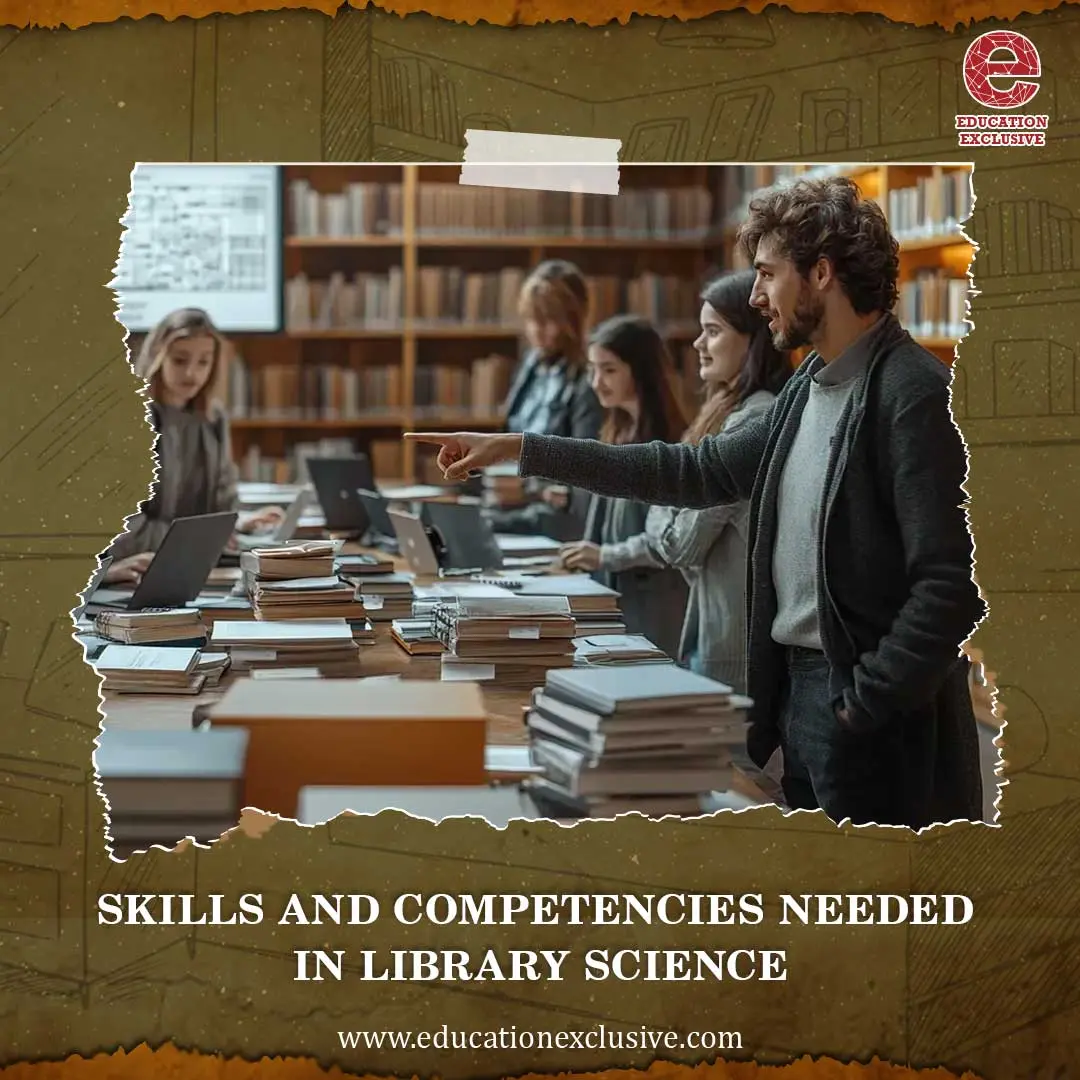
A successful career in library science often starts with personal traits like a love for learning, books, and helping others. Strong organisational, computer, and communication skills and a friendly and ethical mindset are crucial for thriving in this field.
Critical competencies for librarians include tech proficiency, managing databases, locating resources, and engaging with patrons. Being well-read, promoting reading, and adapting to new tools are essential. Vital customer service, problem-solving, public speaking, and an awareness of current events are also crucial.
Librarianship combines natural abilities, learned skills, and adaptability. While education provides the technical foundation, real-world experience refines interpersonal skills, making it a dynamic and fulfilling profession for those passionate about knowledge and service.
Areas of Specialisation
Library science offers various areas of specialisation, allowing professionals to focus on specific aspects of the field based on their interests and expertise. Some common specialisations include:
1. Academic Librarianship
The position focuses on serving the needs of colleges, universities, and other educational institutions by supporting research, instruction, and academic success. Responsibilities include managing scholarly collections and assisting students and faculty with information retrieval.
2. Public Librarianship
Caters to the general public in community libraries. Public librarians engage in outreach programs, reader advisory services, and organising events to promote literacy and lifelong learning.
3. School Librarianship
Serves K-12 schools by supporting students, teachers, and curricula. Responsibilities often include:
-
Teaching information literacy.
-
Fostering a love of reading.
-
Integrating digital tools into education.
4. Special Librarianship
It involves working in non-traditional library settings, such as corporations, law firms, government agencies, hospitals, or museums. These librarians manage highly specialised collections and provide tailored information services.
5. Digital Librarianship
Digital librarians focus on managing digital resources such as e-books, online journals, databases, and digital archives. They ensure the accessibility, preservation, and organisation of electronic materials.
6. Archival Studies
Archivists specialise in preserving and managing historical records and primary source materials. They work in museums, historical societies, and other institutions to maintain collections of enduring value.
7. Medical/Health Librarianship
Medical librarians provide health-related information to medical professionals, researchers, and patients. They often work in hospitals, research institutions, or public health organisations.
8. Law Librarianship
Serves the legal community by managing legal documents, statutes, and case law resources. Law librarians often assist attorneys, judges, and law students with in-depth research.
9. Children’s and Young Adult Librarianship
Specialises serving children and teens by curating age-appropriate collections, hosting events, and fostering literacy. This specialisation often overlaps with public and school librarianship.
10. Cataloging and Metadata Librarianship
This field focuses on organising and classifying library materials. Specialists ensure physical and digital items are easily discoverable through precise metadata and cataloguing standards.
11. Collection Development
It involves selecting and curating resources that meet the needs of a specific audience or institution. Professionals analyse user needs, trends, and budgets to build comprehensive collections.
12. Information Literacy and Instruction
Concentrates on teaching users how to locate, evaluate, and use information effectively. This area is crucial in academic and public libraries, where information literacy skills are in high demand.
13. Library Technology/Systems Librarianship
Manages and implements library technology systems, such as integrated library systems (ILS), discovery layers, and digital tools. These professionals ensure efficient operation and user experience.
14. Research and Reference Services
Reference librarians assist users in finding and interpreting information. They provide tailored guidance for academic, personal, or professional inquiries.
15. Preservation and Conservation
Dedicated to maintaining and repairing physical materials, such as books, manuscripts, and artefacts, ensuring their longevity for future generations.
The Digital Age: How Technology is Shaping Library Science
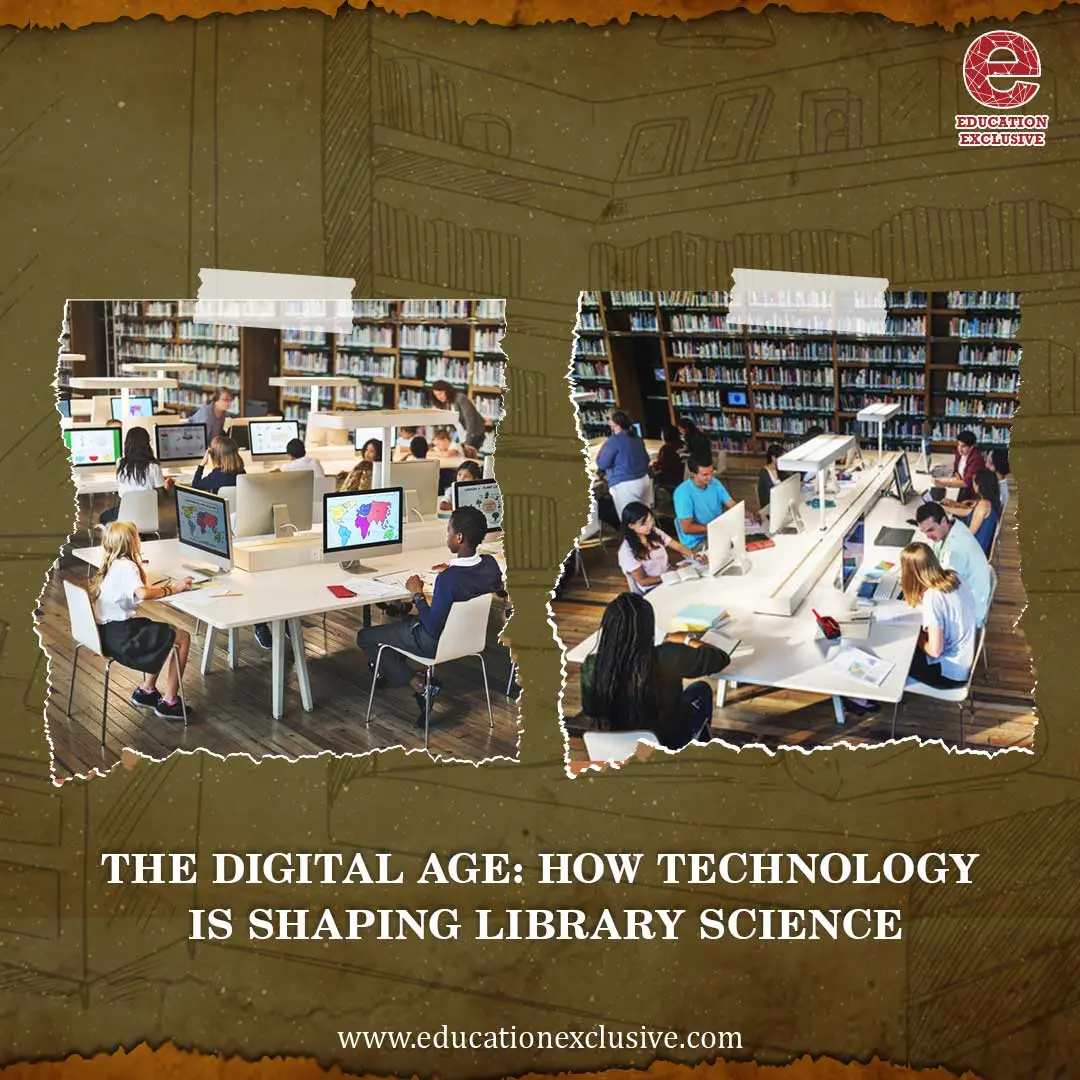
The digital age has dramatically reshaped the role of librarians, evolving them from custodians of physical books to guides who navigate and curate digital resources. With the rise of digital platforms, librarians now focus on fostering information literacy, teaching users to evaluate sources and think strategically and critically in a digital world.
Librarians also manage cutting-edge technologies like virtual reality and AI, host workshops, promote digital literacy, and collaborate with local organisations to meet community needs. They advocate for digital inclusion, pushing for affordable internet access and equitable information.
As data-driven decision-makers, librarians use analytics to understand user needs better and improve services. New specialised roles have emerged, such as data librarians, digital preservation experts, and maker space librarians, all of which help users harness technology for creative and educational pursuits.
The Day-to-Day Life of a Librarian
The daily life of a librarian varies depending on their role but typically involves assisting patrons with finding resources, answering questions, and teaching library tools. Librarians manage collections by organising, cataloguing, and updating materials, hosting events, promoting services, and fostering community outreach. They also handle technology by maintaining digital catalogues and aiding users with eBooks and databases.
Administrative tasks include policy development, budgeting, and staff coordination. Specialised duties, such as supporting research, preserving archives, or running children’s programs, add variety. Problem-solving, adapting to new technologies, and continuous learning are integral to keeping libraries efficient and user-focused.
Career Paths and Job Opportunities
Some of the career options are as given below:
-
Library Attendant
-
Library Assistant
-
Semi-Professional Assistant
-
Junior Librarian/Professional Assistant
-
Assistant Librarian
-
Deputy Librarian
-
Librarian/Chief Librarian
-
Researcher/Scientists/Application Specialist
-
Consultant/Reference Librarian
-
Cataloguer/Technical Assistant/Records Manager
-
Director/Head Of Information Centre
-
Senior Information Analyst
-
Junior Information Analyst
-
Senior Library Information Assistant
-
Law Librarian
-
Indexer
-
Information architect
-
Archivist
Some of the Major Institutions offering Courses in Library Science
National Institute of Science Communication and Information Resource (NISCAIR) New Delhi and Documentation Research & Training Centre (DRTC) Bengaluru are two prime institutes offering Library and Information Science courses. Besides this, mostly all Indian universities offer degree courses in Library & Information Science, some are:
|
Name Of the Institution |
Course Fee Structure |
|
(M.Lib.I.Sc.) Rs. 6,764 |
|
|
|
|
|
|
Mahatma Gandhi Kashi Vidyapeeth |
|
|
Pt. Ravi Shankar Shukla University |
|
|
(B.Lib.I.Sc)
|
|
|
(B.Lib.I.Sc.) Rs.18,500 |
|
|
(B.Lib.I.Sc.) Rs.7,000 |
|
|
(M.Lib.I.Sc.) Rs.14,020 |
|
|
Makhanlal Chaturvedi National Institute of Journalism |
(B.Lib.I.Sc.) Rs.13,808 |
|
|
|
(M.Sc.) Rs.10,500 |
|
|
(B.Lib.I.Sc.) Rs. 2 LPA |
|
|
(M.Lib.I.Sc.) Rs.41,840 |
|
|
Osmania University Campus |
(M.Lib.I.Sc.) Rs. 41,600 |
|
Lucknow University |
(B.Lib.I.Sc.) Rs. 13,990 |
|
Dr. Hari Singh Gour Sagar University |
|
|
Jivaji University |
|
|
Bhim Rao Ambedkar University |
(B.Lib.I.Sc.) Rs.6,100 (1year) |
|
Bilaspur University |
|
Distance Education
-
Indira Gandhi National Open University, Website : www.ignou.ac.in
-
Dr. B.R. Ambedkar Open University, E-mail : braouap@hdl.dot.net.in
-
Kota Open University, Tel.: 91-(744-421254)
-
Nalanda Open University Camp, Tel.: 91-(612-234330)
-
Yashwantrao Chavan Maharashtra Open University, Website : www.ycmou.com
-
Madhya Pradesh Bhoj (Open) University, Tel.: 91-(755-550606)
-
Dr.Babasaheb Ambedkar Open University, Tel.: 91-(79-2869690)
-
Karnataka State Open University, Tel.: 91-(821-515149)
-
Netaji Subhas Open University, E-mail : nsou@cal2.vsnl.net.in
-
U.P.Rajarshi Tandon Open University, E-mail : sanyal@nde.vsnl.net.in
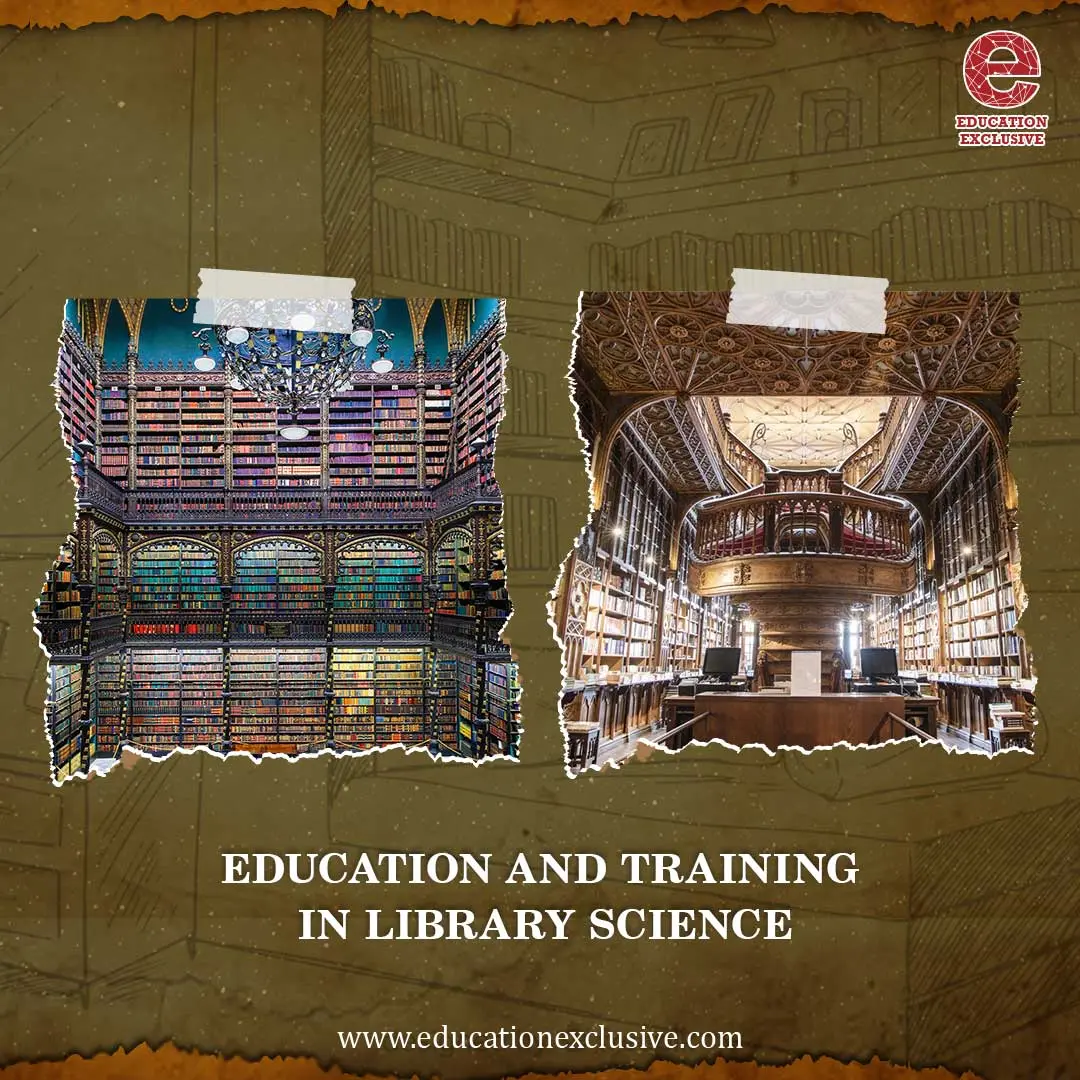
Education and Training in Library Science
1. Foundational Education
Undergraduate Programs: While there are few standalone undergraduate degrees in LIS, students can start with degrees in fields like English, History, Information Technology, Communication, or Social Sciences.
Specialised Undergraduate Programs: A few institutions offer Bachelor's degrees in Library Science or Information Management, providing early exposure to cataloguing, collection development, and digital literacy.
2. Master's in Library and Information Science (MLIS/MLS):
The Master's degree in LIS is the most common requirement for professional librarian roles, particularly in public, academic, and specialised libraries.
Admission Requirements
An undergraduate degree in any field (no specific background required).
Some programs may require prior coursework or experience in technology, research, or education.
Personal statements, recommendations, and, in some cases, GRE scores are typical requirements.
3. Advanced Degrees
Doctorate in Library and Information Science (PhD)
Suitable for those interested in academic research, teaching LIS at the university level, or contributing to advancing library theories and practices.
Focus areas include information behaviour, digital preservation, and knowledge organisation.
Requires the completion of a dissertation based on original research.
Specialist Degrees (e.g., EdS in Library Science)
4. Certifications and Continuing Education
Library Certifications: In some regions or roles (e.g., school librarianship), certification is required in addition to an MLIS.
Examples include:
-
School Library Media Specialist Certification: For librarians working in K-12 schools.
-
Certified Records Manager (CRM): This is for those specialising in records and information management.
-
Digital Archives Specialist (DAS): Offered by the Society of American Archivists for expertise in digital preservation.
Looking Ahead: The Future of Library Science
The future of Library Science is shaped by technological advancements and evolving societal needs, with a strong focus on digital libraries, hybrid models, and AI-driven innovations. Libraries are increasingly prioritizing digital collections, blending physical and virtual spaces to offer greater accessibility. AI enhances cataloging, personalized recommendations, and user support, while data privacy and cybersecurity are critical concerns. Open access initiatives and institutional repositories are promoting the democratization of knowledge. Libraries are becoming innovation hubs with makerspaces, collaborative learning environments, and STEAM programs. Digital preservation, VR/AR technologies, and sustainable, eco-friendly designs are also transforming libraries into forward-thinking, community-centered spaces.
Resources and Next Steps for Interested Readers
If you're inspired to explore Library Science further, there are plenty of resources to help you get started. Look into professional organisations like the American Library Association (ALA) or the International Federation of Library Associations (IFLA) for insights into the field, networking opportunities, and professional development programs.
Consider enrolling in introductory courses on platforms like Coursera and edX or directly through universities offering Library and Information Science (LIS) degrees. Volunteering at local libraries or archives can provide hands-on experience and a better understanding of the profession. Finally, stay updated on emerging trends by following LIS journals, blogs, and webinars that discuss the intersection of libraries, technology, and community service.
Myth Busters
1. MYTH: Libraries are just for kids.
BUSTED! Most libraries do offer a lot of early literacy programming and resources. The number of items in their physical collection is split almost evenly between materials for adults, children, and teens.
Resources like LinkedIn Learning are also perfect for adults looking to enhance their professional skills.
2. MYTH: All library events are just author talks.
BUSTED! Libraries bring in all presenters, not just authors and literary types. FCPL frequently hosts individuals with knowledge of gardening, history and wellness.
3. MYTH: Libraries are so 20th century.
BUSTED! We know that is what a lot of people think. But guess what?
According to the Pew Research Center, the typical American reads five books yearly. They have to get those books somewhere! Reading habits are changing in the 21st century, and 30% of American adults read at least one eBook in 2021, up to five percentage points from 2020. Print books remain the most popular format for reading, with 65% of adults in 2021 saying they read a print book in the past year.
4. MYTH: I don't need a book, so I don't need a library.
BUSTED! Reading has many benefits. According to a 2020 study by Cambridge University Press, people who read more are less likely to experience cognitive decline.
Conclusion
Library Science is more than just preserving books; it's about shaping the future of information, accessibility, and learning. From ancient scrolls to digital archives, librarians are the unsung heroes who bridge the past and future, ensuring that knowledge is preserved, shared, and used for the benefit of all. As technology advances, libraries transform into dynamic, inclusive hubs of innovation, creativity, and community. Whether through AI, open access, or maker spaces, the future of Library Science is bright, offering endless opportunities for those passionate about knowledge, service, and making a lasting impact on society.
You can also read: Human Library – ‘The Living Book’
- Library Science
- Librarians Roles in a Digital Age

